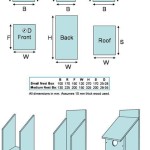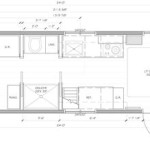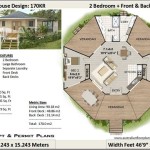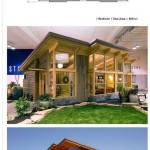First Floor Plan House Simple Design
Designing a simple and efficient first-floor house plan involves careful consideration of several factors, including lifestyle, budget, and available space. A well-designed first floor maximizes functionality while maintaining aesthetic appeal. This article explores key aspects of designing a simple yet effective first-floor plan.
Defining Needs and Priorities
Before embarking on the design process, defining the needs and priorities of the occupants is crucial. This includes considerations such as the number of bedrooms and bathrooms required, whether a dedicated home office is necessary, and the desired size and layout of the kitchen and living areas. Establishing clear priorities helps guide the design process and ensures the final plan meets the specific needs of the household.
Optimizing Space Utilization
Effective space utilization is paramount in a simple house design. This involves minimizing wasted space through careful planning of room sizes and layouts. Consider incorporating multi-functional spaces, such as a combined kitchen and dining area, to maximize space efficiency. Open floor plans can create a sense of spaciousness and improve flow between living areas.
Focusing on Functionality
Functionality should be a primary focus when designing a simple first-floor plan. Rooms should be arranged logically to facilitate smooth traffic flow and daily activities. Consider the placement of windows and doors to maximize natural light and ventilation. Prioritize practicality over purely aesthetic considerations to ensure the house functions efficiently for its occupants.
Prioritizing Natural Light and Ventilation
Incorporating ample natural light and ventilation is essential for creating a healthy and comfortable living environment. Large windows and strategically placed skylights can maximize natural light penetration, reducing the need for artificial lighting during the day. Proper ventilation helps regulate indoor air quality and temperature, contributing to a healthier and more energy-efficient home.
Considering Future Adaptability
Designing for future adaptability is a wise investment when planning a first-floor house plan. Consider potential future needs, such as the possibility of expanding the family or accommodating aging in place. Designing flexible spaces that can be easily adapted to changing needs can save significant time and expense in the future. This may involve incorporating features like wider doorways and hallways to accommodate wheelchair accessibility.
Choosing Sustainable Materials and Practices
Sustainable design practices are increasingly important in modern home construction. Consider using eco-friendly building materials, such as recycled or sustainably sourced wood, and incorporating energy-efficient features like insulation and high-performance windows. These choices can reduce the environmental impact of the home and potentially lower energy costs over time.
Budgeting and Cost Considerations
Establishing a realistic budget is essential before beginning the design process. The cost of construction can vary significantly based on factors such as materials, labor costs, and the complexity of the design. Working with a qualified architect or builder can help ensure the design stays within budget while meeting the desired specifications. Careful planning and cost management are crucial for avoiding unexpected expenses and ensuring the project stays on track.
Working with Professionals
Collaborating with experienced professionals, such as architects and builders, can significantly streamline the design and construction process. Architects can help translate design ideas into workable plans and ensure compliance with building codes and regulations. Experienced builders can provide valuable insights into construction techniques and material selection, ensuring the project is completed efficiently and to a high standard.
Exterior Design Considerations
The exterior design of the first floor should complement the overall style of the house and enhance its curb appeal. Consider the architectural style of the surrounding homes and choose materials and colors that blend harmoniously with the neighborhood. Landscaping should also be incorporated into the design plan to create an inviting and visually appealing outdoor space.
Accessibility and Universal Design Principles
Incorporating accessibility features, such as wider doorways and ramps, can make the home more accessible for individuals with mobility challenges. Universal design principles aim to create spaces that are usable by people of all ages and abilities. Consider incorporating these principles into the design to enhance the long-term usability and value of the home.
Storage Solutions
Adequate storage is essential in any home. Incorporating ample storage solutions into the first-floor plan can help keep the home organized and clutter-free. Consider built-in closets, shelving, and under-stair storage to maximize space efficiency and minimize the need for freestanding furniture.
Technology Integration
Integrating smart home technology can enhance the functionality and convenience of the first floor. Consider incorporating features such as smart lighting, thermostats, and security systems. These technologies can improve energy efficiency, enhance security, and provide greater control over the home environment.

Small House Plans Beautiful Houses Pictures Floor Plan One Story

Simple House 1st Floor Plan Template

Simple House Plan Design With Garage

Small House Design 2024001 Pinoy Eplans Floor Plans Home

3 Bedroom In A Little Over 1000 Sf Like The Laundry Room Entry Would Need Pantry At L Small House Blueprints Farmhouse Floor Plans Simple

Stylish And Simple Inexpensive House Plans To Build Houseplans Blog Com

12 Examples Of Floor Plans With Dimensions

Stylish And Simple Inexpensive House Plans To Build Houseplans Blog Com

Village House Plans 30x50 Houses

Simple House Floor Plans 3 Bedroom 1 Story With Basement Home Design 1661 Sf Basementdesignfloorp One New Ranch
Related Posts








